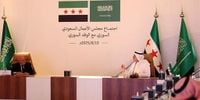The Syrian economy, long battered by years of conflict and international sanctions, is once again under the spotlight as the country faces a fresh wave of currency turmoil. On August 18, 2025, the US dollar surged past the 11,300 Syrian pound mark on the black market, according to Enab Baladi. This significant milestone comes amid rapid fluctuations in the exchange rate that have characterized the Syrian market since the start of the week, leaving citizens and businesses alike scrambling to keep up.
Yet, in a move that has raised eyebrows among economists and business owners, the Central Bank of Syria chose to keep the official exchange rate for the dollar unchanged at 11,000 Syrian pounds, as published in its remittance and exchange bulletin. This decision to hold steady, despite the widening gap between official and black market rates, reflects the deepening economic crisis gripping the country.
Economic expert Abdulrahman Mohammed Thabet, speaking to Enab Baladi, painted a stark picture of the situation. "The Syrian pound is witnessing a sharp decline against the dollar, as its exchange rate in the black market exceeded 11,300 Syrian pounds per dollar, while the Central Bank of Syria fixes a much lower official rate, reflecting a deep economic crisis in the country," he explained. Thabet attributes the pound’s decline to a cocktail of factors, each compounding the effects of the other and making recovery ever more elusive.
First and foremost is unbacked monetary expansion—essentially, the government has been increasing the money supply without corresponding economic growth. This has led to the pound losing much of its value. Inflation and a growing lack of confidence in the local currency have also pushed Syrians to seek refuge in the dollar, further increasing its demand. Economic sanctions have played a pivotal role as well, blocking the inflow of foreign currencies, reducing Syria’s ability to attract investment, and hampering exports.
But the challenges don’t stop there. Thabet points to contradictory financial and monetary policies, a lack of coordination among official bodies, and rampant speculation and market forces as accelerating the currency’s collapse. Layered on top of all this are the country’s ongoing political and security woes, which have only increased uncertainty and encouraged people to rely more heavily on hard currencies like the dollar.
So why has the Central Bank chosen to keep the official rate fixed at 11,000 Syrian pounds, despite the reality on the ground? Thabet offers several reasons: attempts to curb inflation, maintain stability in official transactions, avoid publicly acknowledging the currency’s collapse, and protect what remains of Syria’s foreign currency reserves. But these efforts, he warns, may be doing little to address the root causes of the crisis.
The consequences for ordinary Syrians have been severe. Prices of goods and services continue to rise, eroding the value of savings and making it harder for families to make ends meet. Poverty and unemployment are on the rise, and the black market is expanding rapidly, further weakening the effectiveness of official monetary policies. "The economic and social consequences include rising prices of goods and services, erosion of savings, increasing poverty and unemployment rates, and the expansion of the black market, ultimately weakening the effectiveness of monetary policies," Thabet told Enab Baladi.
These developments come on the heels of previous measures taken by the Central Bank. Back on May 13, 2025, the bank announced a reduction in the exchange rate of the pound against the US dollar, setting it at 11,000 pounds after it had stabilized at 12,000 pounds since March. The bank also decided to unify all exchange rate bulletins into a single official bulletin, with rates determined according to average global prices and a margin of movement not exceeding 1% of the adopted average rate. While these steps were intended to streamline currency policy and provide greater clarity, the reality on the ground suggests that they have not been enough to stem the tide of the pound’s decline.
As Syria grapples with its currency crisis, efforts are underway to seek new economic lifelines. On August 17, 2025, Minister of Economy and Industry Mohammad Nidal al-Shaar met with the Syrian-Saudi Business Council in Riyadh, as reported by SANA. The high-level meeting, held in the Saudi capital, focused on ways to enhance economic cooperation between Syria and the Kingdom of Saudi Arabia—a partnership that could prove crucial in the months ahead.
According to SANA, the discussions addressed the challenges facing investors on both sides and explored opportunities for joint investments, particularly in vital sectors that offer promising prospects for growth. Minister al-Shaar underscored the importance of overcoming obstacles facing businessmen, emphasizing the Syrian government’s commitment to creating an attractive investment environment that supports partnerships between the public and private sectors.
Al-Shaar’s visit to Saudi Arabia, leading an official delegation, was timed to coincide with a roundtable meeting aimed at strengthening economic relations and trade exchange between the two countries. The Syrian government’s renewed focus on attracting foreign investment and fostering public-private partnerships is seen as a critical strategy for weathering the current storm—and perhaps, eventually, rebuilding the country’s shattered economy.
Still, significant hurdles remain. The currency crisis has made it difficult for both local and foreign investors to plan for the future, and the gap between the official and black market exchange rates creates uncertainty and risk. The ongoing effects of international sanctions, coupled with political instability, continue to cast a long shadow over Syria’s economic prospects.
For many Syrians, the daily reality is one of shrinking purchasing power and rising hardship. The expansion of the black market has become both a symptom and a cause of the broader economic malaise, as people turn to unofficial channels to access dollars and other hard currencies. The government’s efforts to maintain an official rate that does not reflect market realities may help preserve foreign reserves in the short term, but it does little to restore confidence in the pound or to address the structural issues at the heart of the crisis.
As the summer of 2025 draws to a close, Syria finds itself at a crossroads. The outcome of ongoing talks with Saudi Arabia and other regional partners could play a decisive role in shaping the country’s economic future. But for now, the gap between official policy and everyday reality remains wide, leaving many Syrians wondering what comes next—and whether relief is truly in sight.


